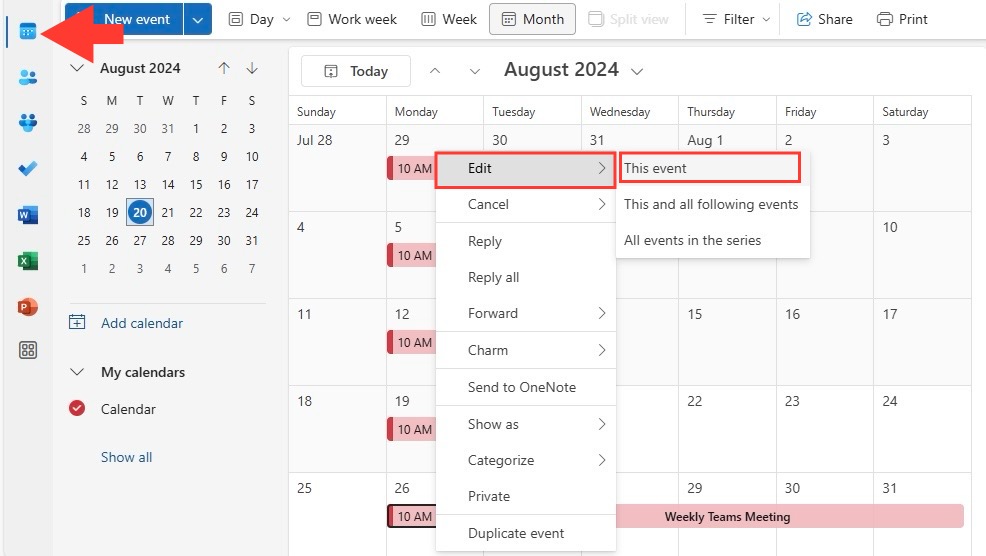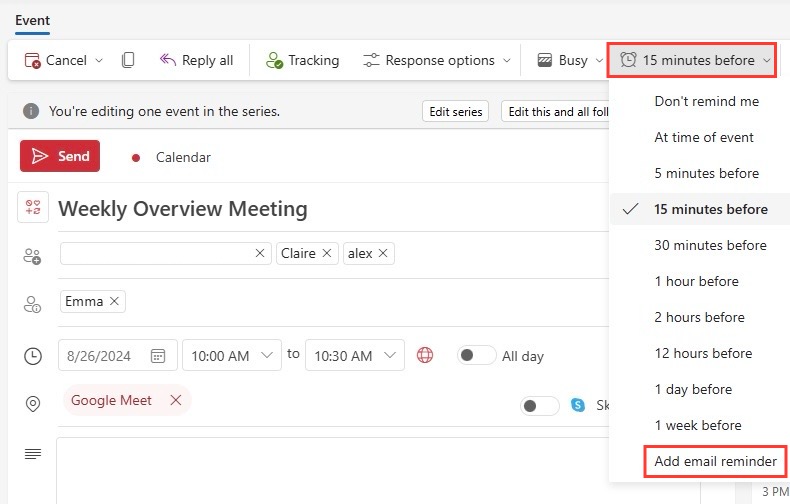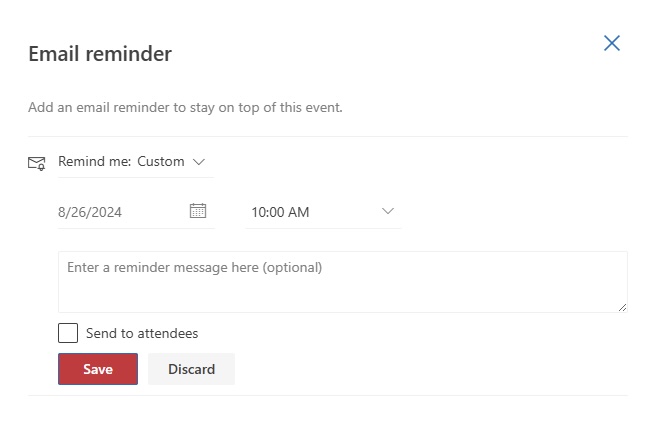Organizational success hinges on the productive management of time and tasks; hence reminders play the pivotal role of the humble yet powerful catalyst in this equation. Personally, I’ve witnessed how task reminders serve as virtual assistants, steering team members towards focus, ensuring that crucial tasks are executed rather than slipping into the abyss of forgetfulness amid chaotic workdays. With reminders in place, we can actively manage workloads, organize schedules, and enhance overall team productivity, which often leads to outstanding results for everyone involved.
Key Takeaways
- To set reminders in Microsoft Teams, you can access the “More Options” menu by clicking the ellipsis (…) next to any channel or chat and select the “Set Up Reminder” to customize frequency, time, and settings.
- You have the option to specify specific days or dates for recurring reminders in Microsoft Teams, allowing them to align with your team’s schedule for better organization and task management.
- For personal organization, utilize the feature to create folders and categories for your reminders within Microsoft Teams, accessed through the ellipses (…) on the left sidebar, ensuring efficient navigation and task prioritization.
Overview of Setting Up Reminders in Microsoft Teams
Setting up reminders in Microsoft Teams is a breeze, ensuring you don’t miss important meetings or deadlines. Imagine it as planting little digital flags throughout your workday landscape; these flags are visible cues that keep you on track with your tasks and commitments. Within Microsoft Teams, the process involves a few simple steps like accessing the calendar tab, selecting your intended meeting, and assigning a reminder. This built-in functionality plays a crucial role in project management and individual productivity by keeping all team members aligned with scheduled tasks, milestones, and deadlines. By utilizing the intuitive user interface of Microsoft Teams, you’ll find that implementing these reminders not only saves time but also reduces the mental load of having to remember each event manually.
Table of Contents
Step-by-Step Guide to Setting Reminders
Step 1: Accessing the Reminders Feature in Teams
Accessing the reminders feature in Microsoft Teams is akin to turning on a navigational system that guides you through your workday commitments. To initiate this process, I open Microsoft Teams and head straight to the Calendar tab, which is prominently displayed. Once there, the path to the Reminders option is clear – usually found on the left-hand side of the screen. A simple click and I have entered the realm of reminders where timeliness and productivity are the orders of the day. This is the first crucial step in ensuring that no meeting, task, or deadline escapes your attention.
Step 2: Creating and Customizing Your Reminder
Embarking on the creation of a reminder within Microsoft Teams, I tap the plus sign to introduce a new reminder into my digital memory bank. Here’s where personalization comes into play, with the ability to infuse life into an otherwise mundane alert. I meticulously fill out the title, set the date, and detail the description making sure each reminder has its distinct fingerprint. Injecting an element of customization, such as assigning it to team members for collaboration or setting unique notification sounds, arms the reminder with relevance and vigor. It becomes a clear, resonant bell amid the noise of busy workstreams, its customization ensuring it’s not just heard but also heeded.
Fine-Tuning Your Reminder Settings
Advanced Customization Options
Advanced customization options in Microsoft Teams inject a whole new level of sophistication into my reminders. These deep dives into personalization begin with accessing the tasks via the Tasks app in Teams, where I create to-do lists and flag messages for follow-up. Tailoring notification tones helps differentiate types of reminders, while priority settings prevent crucial tasks from being drowned out in an ocean of lesser alerts. Furthermore, task reminders offer customization fields such as due date, repeat intervals, and additional notes, turning a simple ping into a fully contextual nudge. I consider these options as painting reminders with my personal brush strokes, vividly coloring them so that they stand out in the canvas of daily tasks.
Managing Reminders for Teams and Channels
When it comes to orchestrating reminders for teams and channels, managing all the nuances requires a dash of strategy and a pinch of foresight. On my Teams dashboard, I navigate to the specific team or channel where collaboration takes place. There, reminders serve as collective checkpoints, informative signals that synchronize group productivity. By designating a reminders tab in each channel, I streamline the process, keeping these prompts visible and accessible to all channel members. The Reminders tab acts as a centralized command center, allowing for a diligent overview and management of all set cues. From this vantage point, I ensure that enforceable accountability isn’t just a concept but a practiced norm.
Best Practices for Reliable Meeting Notifications
Ensuring Notification Reliability for All Participants
Ensuring notification reliability for all participants is akin to maintaining a well-oiled machine; every cog must turn smoothly for optimal performance. To achieve this, I begin by regularly updating our notification tools, preventing dated software from becoming the weak link in the chain of communication. I establish feedback loops where participants can acknowledge receipt of notifications, possibly through read receipts or affirmative responses. Furthermore, Redundancy is not a dirty word here—it’s insurance. By deploying a mix of emails, in-app notifications, and even SMS where appropriate, I cast a wider net of reliability, catching anyone who might otherwise slip through a single channel. These are but the rudimentary steps to ensure that the pulse of our collaborative efforts—the humble notification—never skips a beat.
Effective Strategies for Reminder Management
In the sphere of reminder management, effectiveness is measured by our ability to distinguish the urgent from the important—and act accordingly. First, I categorize reminders based on urgency and relevance, creating an order within the chaos. Next, consolidating reminders on a shared platform like Microsoft Teams allows our team to have a unified view of collective responsibilities, turning individual awareness into collaborative vigilance. Scheduling periodic review sessions helps us refine our reminder system, ensuring it remains in tune with our evolving project landscapes. As a pro tip, I advise integrating personal and team reminders, as this holistic approach ensures that all tasks, regardless of origin, receive equal attention. By following these strategies, reminders go from being mere background noise to being the rhythmic beat driving our team’s productivity forward.
Troubleshooting Common Issues
Inconsistent Notification Delivery Problems
Inconsistent notification delivery—this digital age Achilles’ heel—can impede the seamless flow of communication and cause disarray in the best-laid plans. Through my experience, I’ve found that network issues, software glitches, or misconfigured settings are often the culprits behind this snag. To tackle these issues head-on, I advise auditing the notification settings within Microsoft Teams. This involves verifying that notifications are enabled both on the app and the device and ensuring that the app is granted the proper permissions to send alerts. Additionally, it’s prudent to confirm that the network connection is stable and robust. This meticulous examination is our digital troubleshooting litmus test, seeking to outsmart technologies’ capricious nature and deliver a reliable stream of reminders.
Uninstalling or Reinstalling Trouble-Causing Apps
When faced with apps within Microsoft Teams that cause more turmoil than tranquility, uninstalling them may be a necessary step. To exorcise these digital gremlins, I delve into the Teams settings—right-click on the troublesome app and select ‘Uninstall’. It’s a swift act, almost cathartic, as the app is cast into the digital void.
However, should I desire to give an app a second chance at life within our digital ecosystem, the reinstallation process is equally straightforward. A visit to the Teams app store suffices, where a simple search and click on the ‘Add’ button breathes new life into the previously ousted app. It’s a digital reincarnation, per se, with the hope that the second stint is devoid of hiccups.
In both uninstalling and reinstalling, the key is maintaining a keen eye on performance and utility—ensuring the tools we use contribute to our digital domain rather than hinder it.
Frequently Asked Questions (FAQs)
How do I ensure that my team receives their reminders on time?
To ensure that my team receives their reminders punctually, I set reminders well in advance and synchronize them across all relevant devices and platforms. I verify that notification settings are properly configured in Microsoft Teams and encourage the team to do the same. Regularly checking in with team members about notifications and providing a quick refresher on managing their settings can also help maintain a seamless reminder system.
What are the best practices for setting up effective reminders?
Setting up effective reminders means hitting the sweet spot where they’re impactful yet not intrusive. I always aim for clarity in the reminder description and use categorization so priorities are immediately apparent. I adjust notification settings based on importance and allow margin time for preparation. Regularly reviewing and updating reminders keep them relevant, reinforcing their role as facilitators, not pests, in our workflow.
Can I set recurring reminders for different intervals?
Yes, I can set recurring reminders for various intervals in Microsoft Teams. This function allows me to create reminders for daily, weekly, monthly, or custom periods to match the specific rhythm of our tasks and projects. It’s a straightforward process that helps automate routine follow-ups, ensuring that nothing important falls through the cracks.
How can I manage a large number of reminders in Microsoft Teams?
Managing a large number of reminders in Microsoft Teams calls for organization and strategy. I create categories and folders to sort reminders by project or team. Leveraging the search functionality within Teams allows for quick retrieval of specific reminders. Additionally, utilizing the “Planner” or “Tasks” app can simplify tracking by visualizing deadlines on a calendar or in a list format. Ensuring the reminders are regularly reviewed and updated helps keep the volume manageable and relevant to our current needs.
What should I do if my reminders are not working as expected?
If my reminders in Microsoft Teams are not functioning as anticipated, I first check for basic issues—ensuring the app is updated and that the device’s network connectivity is stable. Delving into the settings, I verify that notification permissions are correct. If the problem persists, I would consider clearing the app’s cache or reaching out through Teams’ support channels for deeper troubleshooting steps.
John Michaloudis is a former accountant and finance analyst at General Electric, a Microsoft MVP since 2020, an Amazon #1 bestselling author of 4 Microsoft Excel books and teacher of Microsoft Excel & Office over at his flagship MyExcelOnline Academy Online Course.










